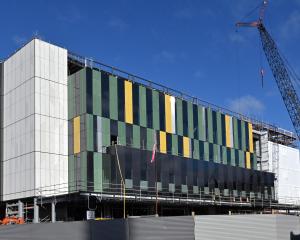
New Zealand was represented at the ceremony by Sir James Allen and Dr G. J. Blackmore. The Prince was received by M. Doumergue, President of the French Republic. When the Prince entered the cathedral the doors were thrown open, and a large number of people who had gathered to welcome him were freely admitted to witness the unveiling. The actual ceremony lasted but a few moments. It mattered not at all that the majority of those whose memory was thus to be perpetuated on the walls of this ancient and historic building were of another creed. Realisation of the difference in race and ideas served only to emphasise the wonderful unanimity of purpose of which this was at once the sad and triumphant achievement. In silence the Prince unveiled the tablet. As the enshrouding Union Jack fell to the ground the inscription was clearly revealed, "To the glory of God and to the memory of one million dead of the British Empire, who fell in the Great War, 1914-1918, and of whom the greater part, rest in France.".

On the conclusion of the ceremony the organ played the British National Anthem, after which the Prince handed to the President of the Republic the following message from the King: "Monsieur le President, on the occasion of the unveiling in Notre Dame Cathedral of the memorial to those of the British Empire who fell in the Great War, I desire to repeat, in the name of all my people, the message of profound gratitude addressed by me to the French nation two years ago, when I visited our war cemeteries in France. To all who mourn the dead we commemorate to-day it is a consolation that France, with touching sympathy and generosity, has provided permanent resting places for our dear ones, has allowed our representatives to care for these graves as if in their own homes and continues to regard these hallowed spots with reverence and affection. We recall the dark days when our two peoples found hope in their unshakable loyalty to one another; and to-day we also remember that the living bonds between our peoples will not grow weaker by time. Our gratitude grows from year to year, and it is with a full heart, Monsieur le President, that I thank you."
Long live St Kilda Borough
Once upon a time, in the dear dead days beyond recall, the bright humours incident to suburban council meetings ranked among the choicest of local amenities. Amalgamation, working on lines of dull utilitarianism, has almost robbed us of the old joy. Where are the representatives of the exclusive, self-contained municipalities of South Dunedin, Caversham, Roslyn, Mornington, North-East Valley?
Gone like so many blessed things which we did not properly appreciate when they were with us. But let us cling the more tenaciously to what is left to us. We still have the St Kilda Corporation, standing out in solitary but proud independence, over the graves, as it were, of its defunct associates. As regards St Kilda, I am a pronounced anti-amalgamationist. Let this last relic of self-government be preserved to us, if only in the interests of the common gaiety.
— by ‘Wayfarer’
Promoting Leith Valley progress
The second annual meeting of the Dunedin North and Leith Amenities Society was held in the George Street School hall last night. The president (Mr John Gray) said that the society had reason to congratulate itself on the work that had been done during the first year of its existence. The society had been instrumental in getting the City Council to improve the bed of the Leith, and lights had also been put on the Bullock Track leading from the Woodhaugh Valley up to Maori Hill, and at Woodhaugh, where the swimming pool had been cleared out.
Further representations had been made to have the road up the Woodhaugh Valley regraded, as it was almost impassable in winter time. This work was soon to be done.
— ODT, 27.8.1924 (Compiled by Peter Dowden)











